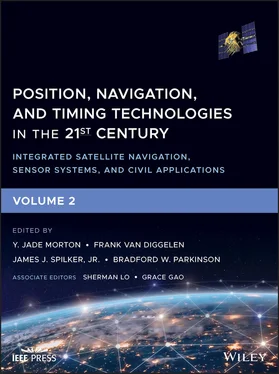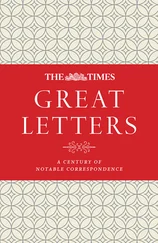160 160 Versus Technology, http://www.versustech.com
161 161 EIRIS System, http://www.elcomel.com.ar/english/eiris.htm
162 162 S. Sen, D. Kim, S. Laroche, K.H. Kim, and J. Lee, “Bringing CUPID indoor positioning system to practice,” in Proceedings of the 24th International Conference on World Wide Web, ACM, May 2015, pp. 938–948.
163 163 Q. Xu, R. Zheng, and S. Hranilovic, “Idyll: Indoor localization using inertial and light sensors on smartphones,” in Proceedings of the 2015 ACM International Joint Conference on Pervasive and Ubiquitous Computing ACM2015, September 2015, pp. 307–318.
164 164 T. Liu, M. Carlberg, G. Chen, J. Chen, J. Kua, and A. Zakhor, “Indoor localization and visualization using a human‐operated backpack system,” Proceedings of the 2010 International Conference on Indoor Positioning and Indoor Navigation (IPIN), September 15–17, 2010 Campus Science City, ETH Zurich, Switzerland, 2010, pp. 890–899.
165 165 D. Lymberopoulos, J. Liu, X. Yang, R.R. Choudhury, S. Sen, and V. Handziski, “Microsoft indoor localization competition: Experiences and lessons learned,” GetMobile: Mobile Computing and Communications, 18(4), pp. 24–31, 2015.
166 166 M. Romanovas, V. Goridko, A. Al‐Jawad, M. Schwaab, L. Klingbeil, M. Traechtler, and Y. Manoli, “A study on indoor pedestrian localization algorithms with foot‐mounted sensors,” International Conference on Indoor Positioning and Indoor Navigation, 2012.
167 167 B. Donohoo, C. Ohlsen, and S. Pasricha, “A middleware framework for application‐aware and user‐specific energy optimization in smart mobile devices,” Journal of Pervasive and Mobile Computing, Vol. 20, pp. 47–63, July 2015.
168 168 B. Donohoo, C. Ohlsen, S. Pasricha, C. Anderson, and Y. Xiang, “Context‐aware energy enhancements for smart mobile devices,” IEEE Transactions on Mobile Computing (TMC), Vol. 13, No. 8, August 2014, pp. 1720–1732.
169 169 B. Donohoo, C. Ohlsen, S. Pasricha, and C. Anderson, “Exploiting spatiotemporal and device contexts for energy‐efficient mobile embedded systems,” IEEE/ACM Design Automation Conference (DAC 2012), July 2012.
170 170 B. Donohoo, C. Ohlsen, and S. Pasricha, “AURA: An application and user interaction aware middleware framework for energy optimization in mobile devices,” IEEE International Conference on Computer Design (ICCD 2011), October 2011.
171 171 S. Tiku and S. Pasricha, “PortLoc: A portable data‐driven indoor localization framework for smartphones,” IEEE Design and Test, 2019.
172 172 S. Tiku, S. Pasricha, B. Notaros, and Q. Han, “SHERPA: A lightweight smartphone heterogeneity resilient portable indoor localization framework,” IEEE International Conference on Embedded Software and Systems (ICESS), Las Vegas, Nevada, June 2019.
173 173 L. Wirola, T. Laine, and J. Syrjärinne, “Mass market considerations for indoor positioning and navigation,” Proceedings of the 2010 International Conference on Indoor Positioning and Indoor Navigation (IPIN), September 15–17, 2010 Campus Science City, ETH Zurich, Switzerland, 2010.
174 174 O. Schneider, “Requirements for positioning and navigation in underground constructions,” Proceedings of the 2010 International Conference on Indoor Positioning and Indoor Navigation (IPIN), September 15–17, 2010 Campus Science City, ETH Zurich, Switzerland, 2010.
175 175 J. Rantakokko, P. Händel, M. Fredholm, and F. Marsten‐Eklöf, “User requirements for localization and tracking technology: A survey of mission‐specific needs and constraints,” Proceedings of the 2010 International Conference on Indoor Positioning and Indoor Navigation (IPIN), September 15–17, 2010 Campus Science City, ETH Zurich, Switzerland, 2010.
38 Navigation with Cellular Signals of Opportunity
Zaher (Zak) M. Kassas
University of California Irvine, United States
Among the different types of signals of opportunity, cellular signals are particularly attractive for positioning, navigation, and timing (PNT) due to their inherently attractive characteristics:
AbundanceCellular base transceiver stations (BTSs) are plentiful due to the ubiquity of cellular and smartphones and tablets. The number of BTSs is bound to increase dramatically with the introduction of small cells to support fifth‐generation (5G) wireless systems.
Geometric diversityThe cell configuration by construction yields favorable BTS geometry, unlike certain terrestrial transmitters, which tend to be colocated (e.g. digital television). Such geometric diversity yields low geometric dilution of precision (GDOP) factors, which results in a precise PNT solution.
High carrier frequencyThe current cellular carrier frequency ranges between 800 MHz and 1900 MHz, which yields precise carrier phase navigation observables. Future 5G networks will tap into frequencies between 30 and 300 GHz.
Large bandwidthCellular signals have a large bandwidth, which yields accurate time‐of‐arrival (TOA) estimation (e.g. the bandwidth of certain cellular long‐term evolution (LTE) reference signals is up to 20 MHz).
High transmitted powerCellular signals are often available and usable in environments where global navigation satellite system (GNSS) signals are challenged (e.g. indoors and in deep urban canyons). The received carrier‐to‐noise ratio, C/N0, from nearby cellular BTSs is more than 20 dB‐Hz than that received from GPS space vehicles (SVs).
Free to useThere is no deployment cost associated with using cellular signals for PNT – the signals are practically free to use. Specifically, the user equipment (UE) could “eavesdrop” on the transmitted cellular signals without communicating with the BTS, extract necessary PNT information from received signals, and calculate the navigation solution locally. While other navigation approaches requiring two‐way communication between the UE and BTS (i.e. network‐based) exist, this chapter focuses on explaining how UE‐based navigation could be achieved.
Regardless of whether GNSS signals are available or not, cellular signals of opportunity could be used to produce or improve the navigation solution. In the absence of GNSS signals, cellular signals could be used to produce a navigation solution in a stand‐alone fashion or to aid the inertial navigation system (INS) [1–6]. When GNSS signals are available, cellular signals could be fused with GNSS signals, yielding a navigation solution that is superior to a stand‐alone GNSS solution, particularly in the vertical direction [7, 8].
Cellular signals are not intended for PNT. Therefore, to use these signals for such purpose, several challenges must be addressed. This has been the subject of extensive research over the past few years. These challenges and potential remedies are summarized next.
Cellular signals are modulated and subsequently transmitted for non‐PNT purposes. These signals are much more complicated than GNSS signals, and extracting relevant PNT information from them is not straightforward. Recent research has focused on deriving appropriate low‐level models to optimally extract states and parameters of interest for PNT from received cellular signals. The effect of different propagation channels on such signals is an ongoing area of research [9–15].
GNSS receivers are commercially available, and there is a rich body of literature on GNSS receiver design. This is not the case for cellular navigation receivers. The recent literature has published specialized receiver designs for producing navigation observables from received cellular signals (e.g. code phase, carrier phase, and Doppler frequency) [16–19].
GNSS SVs are equipped with atomic oscillators and are tightly synchronized. However, cellular towers are equipped with less stable oscillators, typically oven‐controlled crystal oscillators (OCXOs), and are less tightly synchronized. This is because communication synchronization requirements are less stringent than PNT synchronization requirements. Timing errors arising due to this somewhat loose synchronization could introduce tens of meters of localization error. Researchers have been modeling such errors and synthesizing PNT estimators that compensate for them [20–25].
Читать дальше











